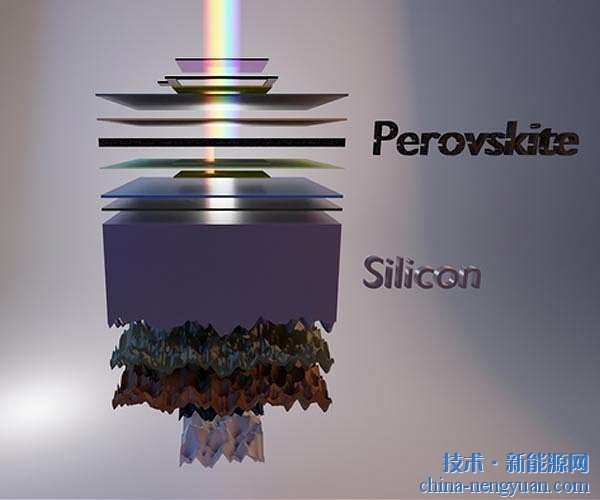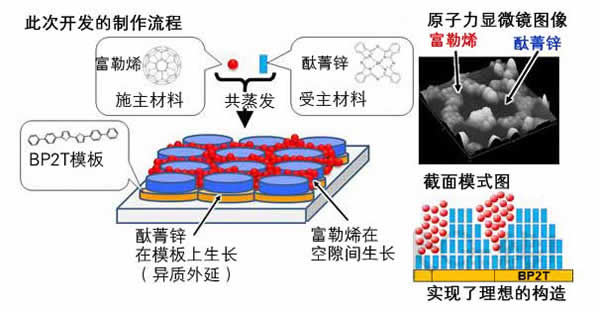 |
Figure 1: Power generation layer of organic thin-film solar cells. The left side is the original random structure, and the right side is the ideal structure realized this time.

Figure 2: The production process developed this time
On May 8, 2014, the Japan Industrial Technology Research Institute (JINTR) announced a breakthrough in the field of organic thin-film solar cells. A research team led by Shigehiko Kita achieved a significant improvement in photoelectric conversion efficiency, increasing it from 1.85% to over 4.15%, which represents more than a doubling of performance.
Organic thin-film solar cells typically use a "Bulk Heterojunction" structure, where donor and acceptor materials are mixed together to form a network that facilitates charge separation. However, controlling the crystalline structure of these materials has been a major challenge, often resulting in a disordered, random arrangement.
This research team managed to overcome this limitation by developing a new crystal growth technique. Instead of allowing the materials to mix randomly, they successfully created a layered structure where the donor and acceptor materials were precisely aligned. This allowed for a more efficient charge transport path to the electrodes, significantly improving the cell's performance.
The method involved using a co-evaporation technique, commonly used in bulk heterojunction fabrication, but with an added twist. By introducing a template layer made of BP2T (Biphenyl Bithiophene), the researchers were able to grow highly ordered crystals of both the donor material (Zinc Phthalocyanine or ZnPc) and the acceptor material (Fullerene or C60). This approach enabled better alignment and crystallinity, leading to improved energy conversion.
The BP2T template layer acted as a foundation, promoting the formation of uniform crystal structures in the layers above. This advancement not only enhances the efficiency of organic solar cells but also opens up new possibilities for future developments in renewable energy technologies.
With this breakthrough, the team is optimistic that the path toward high-efficiency, cost-effective organic thin-film solar cells is now clearer. The results are expected to contribute to the broader adoption of flexible and lightweight solar solutions in various applications.
(Reported by Ching Lung, China and West, Nikkei BP Institute of Clean Technology)
Shoring Prop
Chuzhou Jincheng Metalwork Co.,Ltd , https://www.jinchengscaffold.com